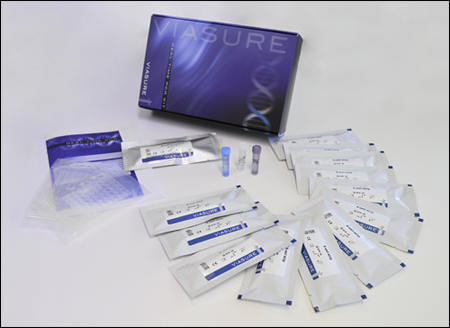
VIASURE Real Time PCR Detection Kits
Influenza A (H1N1) pdm09

Description
VIASURE Influenza H1N1 Real Time PCR Detection Kit is designed for specific identification and quantification of Influenza A (H1N1)2009 in clinical samples from patients with signs and symptoms of respiratory infection.
This test is intended for use as an aid in the diagnosis of Influenza A (H1N1)2009 in humans in combination with clinical and epidemiological risk factors.
RNA is extracted from specimens, amplified using RT‐amplification and detected using fluorescent reporter dye probes specific for Influenza A (H1N1)2009.
Specifications
Information
Influenza viruses belong to the Orthomyxoviridae family and cause the majority of viral lower respiratory tract infections. There are three large types of seasonal influenza viruses, labeled A, B, and C. Type A influenza viruses are further divided into subtypes according to the combinations of two proteins that occur on the surface of the virus, the hemagglutinin or “HA” protein and the neuraminidase or “NA” protein.
In 2009, a strain of influenza A (H1N1) virus containing sequences of avian, swine and human influenza emerged and spread across the world causing influenza pandemic. This virus known as A(H1N1)pdm2009 virus, Influenza A (H1N1)2009 or (H1N1)v, has been widely circulating across the globe since then, and is now established in human populations as a seasonal influenza virus.
Influenza A and B are a significant cause of morbidity and mortality worldwide, considering that elderly and compromised individuals are especially at risk of developing severe illness and complications such as pneumonia. After an incubation period of one to two days, the illness has an abrupt onset. People often feel some or all of these symptoms: fever or feeling feverish/chills, cough, sore throat, nasal stuffiness and discharge, myalgia, headaches, and anorexia.
The influenza viruses can be spread from person to person in two different ways: through the air (large droplets and aerosols from sneezing and coughing), and by direct or indirect contact. Wild waterfowl are believed to be the natural reservoir of influenza A viruses, which can transmit the virus to numerous other species, primarily poultry, pigs, and humans.
Real‐time PCR assays have been shown to be a sensitive and specific diagnostic tool for the differentiation of the pandemic influenza A(H1N1)pdm09, being the hemagglutinin gene a commonly used target. Hemagglutinin is the major envelope protein forming projection like spikes on the virion surface.
